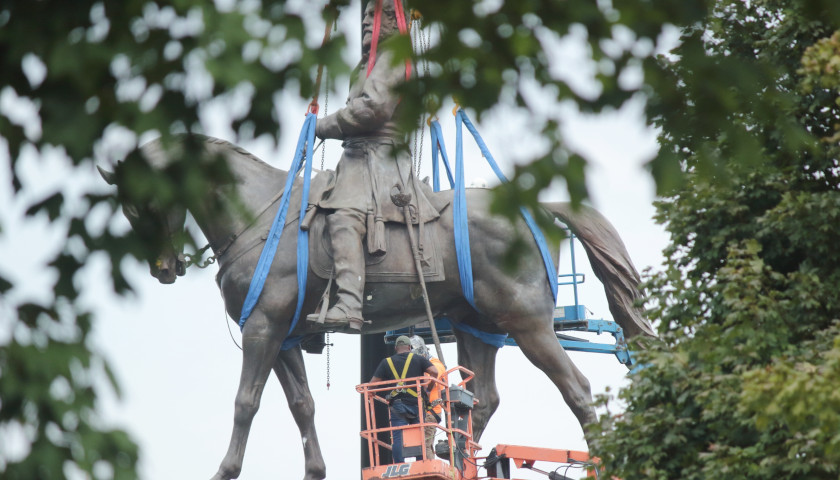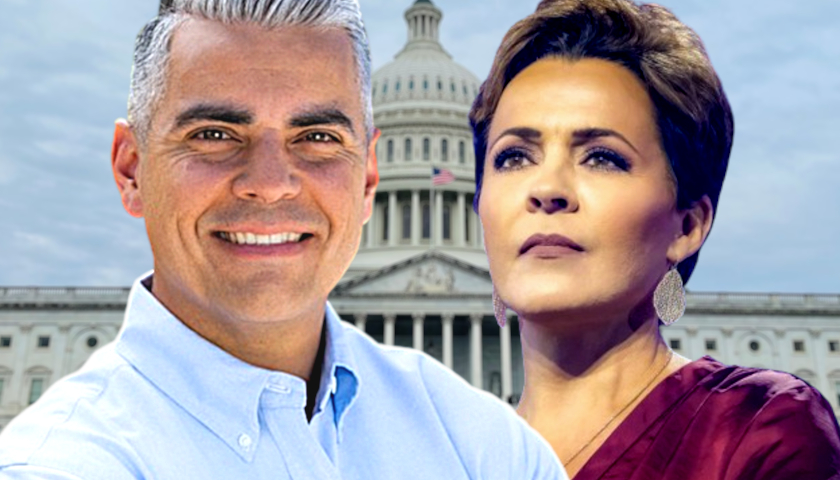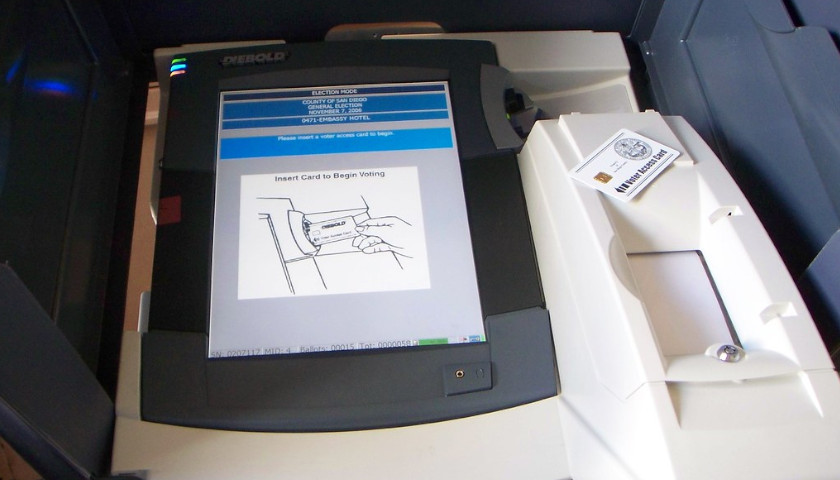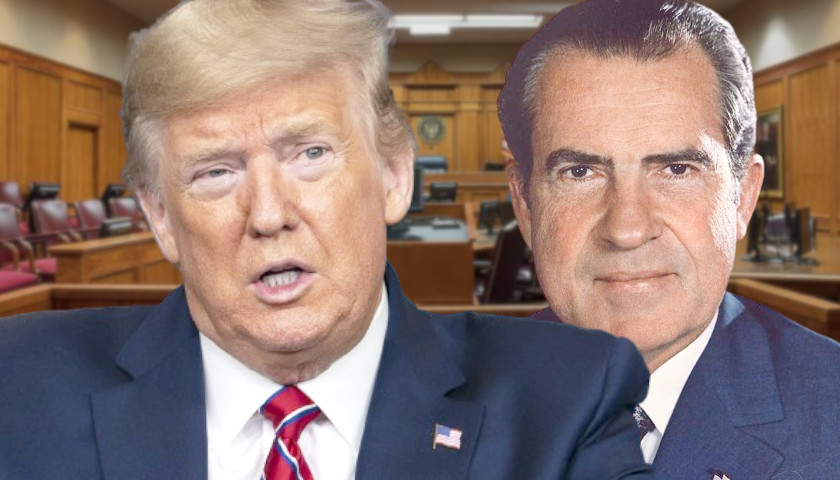The Robert E. Lee statue that towered over Richmond for more than a century is on its way to storage. A crowd of a few hundred people peered through tree branches trying to watch from the public viewing site, and cheered as the monument was lifted off its pedestal. Crews cut along an original seam and removed Lee’s torso from the rest of the statue to allow transport by flatbed truck. The mood among the public was largely upbeat.
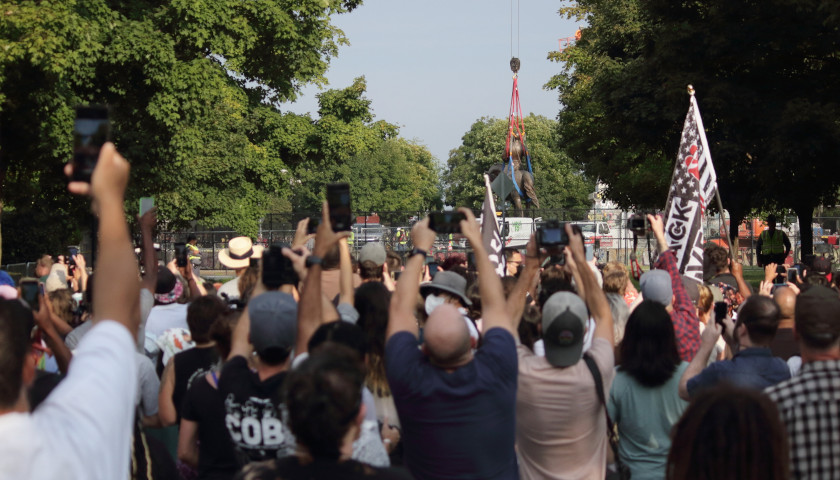 “It’s powerful for one day to dig in and celebrate, but you have to remember it’s just symbolic and it really doesn’t change anything about our lives. So we have to make real change,” Richmond resident Emily Gaidowski told The Virginia Star.
“It’s powerful for one day to dig in and celebrate, but you have to remember it’s just symbolic and it really doesn’t change anything about our lives. So we have to make real change,” Richmond resident Emily Gaidowski told The Virginia Star.
In summer 2020, national protests over George Floyd’s death at the hands of police spread to Virginia. During those protests, further outcry developed as a reaction to Mayor Levar Stoney’s handling of the police force. Stoney then removed the other Confederate monuments from Monument Avenue. But Lee remained, sitting in a 200-foot circle of Commonwealth-owned land in the middle of Richmond. Governor Ralph Northam ordered the removal, but courts issued injunctions blocking removal until lawsuits fighting the order could be decided. Some of the plaintiffs opposing removal were residents of Monument Avenue; they argued in part that removing Lee will harm property values and the district’s National Historic Landmark designation.
Gaidowski was present at demonstrations over Charlottesville’s Lee statue in 2017, and attended the Black Lives Matter protests in Richmond in summer 2020.
“It was scary a year ago. You always felt like you were getting tear gassed, or, be in a riot by the Richmond police,” Gaidowski said.
She said the statues should have never been put up, although she’s concerned that removing them is whitewashing history.
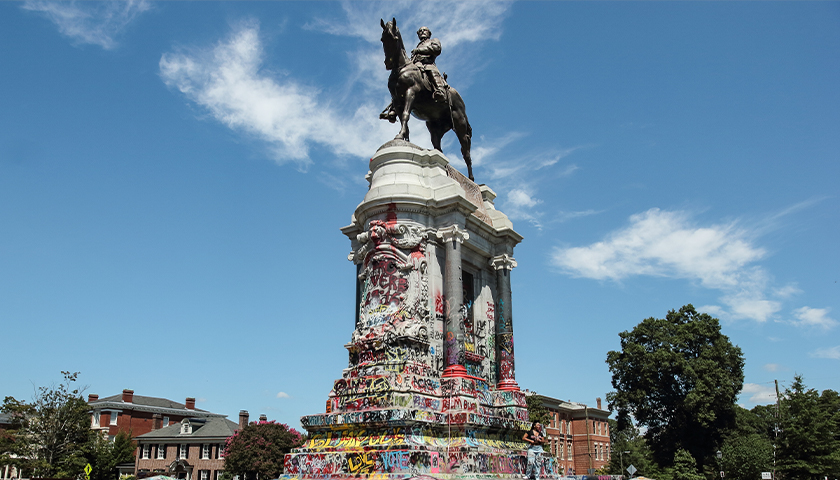 Monument Avenue resident Sue LeGrand said that she and most of her neighbors supported removing the monument and that Monument Avenue property values are still going up.
Monument Avenue resident Sue LeGrand said that she and most of her neighbors supported removing the monument and that Monument Avenue property values are still going up.
“It’s time,” she told The Star. “The true white historic preservation was really leaning more towards, ‘Can we just add context?’ Because you know, it was the Capital of the Confederacy, this is part of history, ugly as it is. But I think people evolved on this issue and realized the kind of real hurt in the symbolism and what it does to people.”
She said events like the violence against Floyd and others, along with more day-to-day incidents, led to a political climate with enough political will to remove the monuments.
Some of the public present at the removal were from outside Richmond.
Courtland resident Robbie Taylor said he came to see how the crews removed the monument. He noted the unique artistic value of the monument.
“I don’t really have a feeling one way or the other, but it’s probably time for it to come down,” he said. “Truthfully, it’s probably time, it’s caused enough trouble.”
“Part of me hates to see it go, because it’s pretty, but I get it. It hurts people’s feelings. We have to live together,” he said.
“I think you probably could have cleaned it up, put it in context, and learn from it,” Taylor said. “I think it’s probably a waste of money.”
Taylor said, “You wonder how much of this is our governor trying to make amends for his past scandals.”
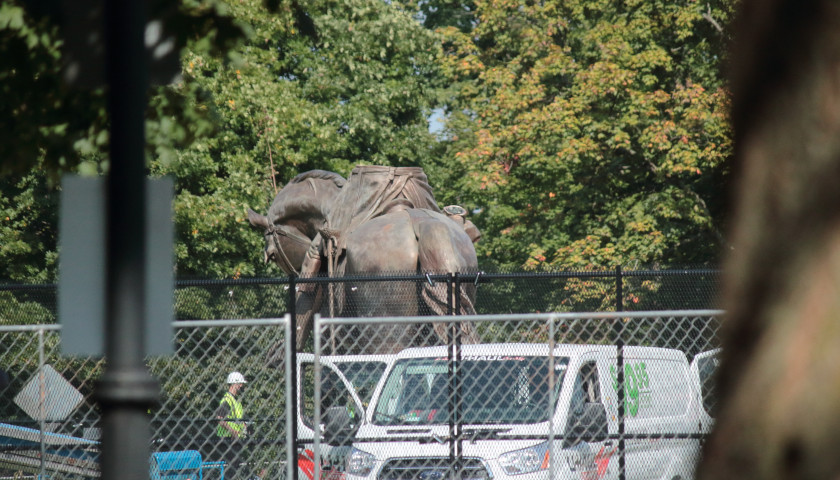 Gogo, a South African citizen speaking under a pseudonym, said she was already in Richmond on other business, but wanted to watch the removal. She said the events leading up to removal of the monument are part of an international movement that also has episodes in her country.
Gogo, a South African citizen speaking under a pseudonym, said she was already in Richmond on other business, but wanted to watch the removal. She said the events leading up to removal of the monument are part of an international movement that also has episodes in her country.
“This feels related to all those protests that are happening,” she said.
She said that the space remaining and the unknown fate of the monument raises questions: “How do we think about the past? How do we think about the heroes and villains? How do we think about things that we love and don’t love?”
Gogo thinks all the removed monuments from across Virginia should be collected into one museum.
Work continues on the pedestal of the monument to remove a time capsule and to install a new one. Artifacts from the protests and a sign renaming the area the “Marcus-David Peters” circle have been collected for temporary storage at the Library of Virginia. Plans for the future of the monument, the artifacts, and Monument Avenue are still being developed.
A press release from Governor Ralph Northam states that Lee will be stored until a permanent location is chosen for its display, but the pedestal will remain during an effort to re-imagine Monument Avenue spearheaded by the city of Richmond and the Virginia Museum of Fine Arts.
Although a state spokesperson said they are not disclosing the storage location for security reasons, on Tuesday WRIC reported that the statue will be stored temporarily at the Goochland Women’s Correctional Center.
“This area will be re-imagined,” LeGrand said. “But bigger picture I think there’s a lot of healing that needs to happen and people need to be kind of be a little less myopic to see the big picture, and look at everybody.”
“I don’t think this solves anything. It’s not all better after today. I think probably more has been made of it than needed to be. It is a statue. I think we’ve got bigger fish to fry,” Taylor said.
Some local residents told The Star they’re watching to see if politicians will follow up on the largely performative monument removals with new policies that address the core concerns of the 2020 protests.
Gaidowski listed: “Concrete legislative change. We need to change how we’re policing. We need to add more people of color to our lawmakers and police. More police training.”
– – –
Eric Burk is a reporter at The Virginia Star and The Star News Network. Email tips to [email protected].
Photos by Eric Burk.

